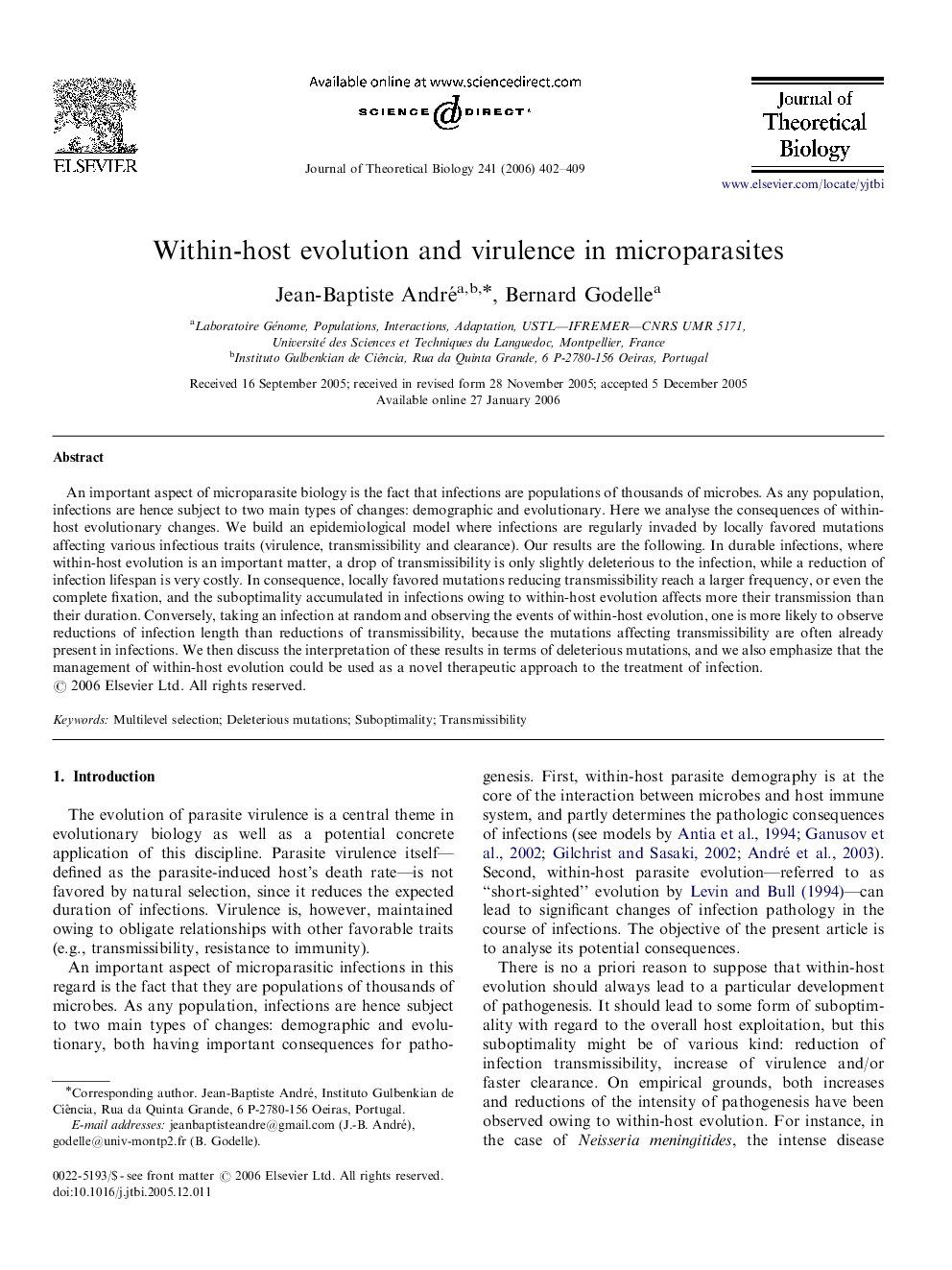| Article ID | Journal | Published Year | Pages | File Type |
|---|---|---|---|---|
| 4499518 | Journal of Theoretical Biology | 2006 | 8 Pages |
Abstract
An important aspect of microparasite biology is the fact that infections are populations of thousands of microbes. As any population, infections are hence subject to two main types of changes: demographic and evolutionary. Here we analyse the consequences of within-host evolutionary changes. We build an epidemiological model where infections are regularly invaded by locally favored mutations affecting various infectious traits (virulence, transmissibility and clearance). Our results are the following. In durable infections, where within-host evolution is an important matter, a drop of transmissibility is only slightly deleterious to the infection, while a reduction of infection lifespan is very costly. In consequence, locally favored mutations reducing transmissibility reach a larger frequency, or even the complete fixation, and the suboptimality accumulated in infections owing to within-host evolution affects more their transmission than their duration. Conversely, taking an infection at random and observing the events of within-host evolution, one is more likely to observe reductions of infection length than reductions of transmissibility, because the mutations affecting transmissibility are often already present in infections. We then discuss the interpretation of these results in terms of deleterious mutations, and we also emphasize that the management of within-host evolution could be used as a novel therapeutic approach to the treatment of infection.
Related Topics
Life Sciences
Agricultural and Biological Sciences
Agricultural and Biological Sciences (General)
Authors
Jean-Baptiste André, Bernard Godelle,
